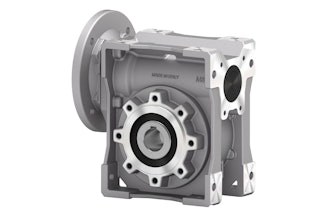
With mountains of data at their disposal and pressure to drive efficiencies, organizations across all sectors have been eager to jump on board the artificial intelligence (AI) and machine learning (ML) bandwagon. But AI and ML progress has not happened uniformly across all sectors. A study of 1,870 IT decision-makers we conducted in January 2021 revealed that AI and ML has boosted productivity and reduced costs in manufacturing to a greater degree than in any other industry. What our survey also made clear is that data quality is a major differentiator between AI and ML leaders and laggards, regardless of industry.
Productivity Gains
It was recently reported that 92 percent of senior manufacturing executives see AI as an essential tool for increasing productivity. Increasingly, AI is being applied to provide business intelligence across the supply chain and the manufacturing process, enabling better planning, and driving efficiency in a number of key areas, including predictive maintenance and raw material availability, while decreasing downtime and extending the lifespan of critical machinery.
Why has AI become such a ubiquitous tool in manufacturing? Perhaps more than any other industry the sheer amount of data created by modern equipment via IoT sensors provides a rich vein of data from which organizations can draw insights.
At the same time, however, manufacturers relying on human power alone to draw conclusions from this data are attempting to drink from a firehose. Machine learning models, by contrast, can deliver data insights in real time, enabling companies to adjust on the fly, reduce waste and ultimately optimize operations. With each passing year, machines are becoming more adept at capturing micro bits of data and rapidly training machine learning models to discover fresh insights.
Medical device company Cerapedics is using IoT and AI to reduce its production losses and improve the yield of manufacturing batches. By using predictive maintenance, real-time alerts and analytics capabilities, Cerapedics is able to lower costs, mitigate potential risks and address issues in a timely manner.
By responding to product demand, supply-chain costs may also be significantly reduced. According to Gartner’s survey, demand forecasting is the most widely used machine learning application in supply chain planning. The study highlights that 45 percent of companies are already using the technology and 43 percent of them are planning to use AI-powered demand forecasting within two years.
Still, barriers to wider AI adoption persist. According to the results of our study, a majority of respondents (82 percent) said they are still exploring how to implement AI or are struggling to operationalize AI and ML models. The top causes for failure include lack of data quality (34 percent), lack of expertise within the organization (34 percent), lack of production-ready data (31 percent), and poorly conceived strategy (31 percent).
Clean Up Your Data
To make effective use of data, it must be made available in a consumable, properly structured format. It may be no surprise, then, that our survey respondents identified poor data quality as the top cause for failure in their AI and ML initiatives. The success of any data-related initiative is dependent on having clean data. The data must be accurately labelled, free of duplicate records, and highly curated to generate correct and meaningful results.
This finding underscores the need for data quality management to be institutionalized across the organization. It must be an integral part of the way business is done – just as everything on the factory floor is measured on quality with a goal of “zero defects.” The data the organization is ingesting and feeding into its AI and ML systems deserves as much rigorous analysis as the products flowing off the manufacturing line.
Moreover, the right stakeholders must be involved. An effective AI strategy can reduce the manpower needed to crunch data, but it doesn’t mean that no human oversight is necessary. Organizations that do AI right have ongoing data management teams in place who are responsible for ensuring data accuracy and determining how insights are being applied to day-to-day operations.
The bottom-line message for manufacturers is this: the potential benefits of AI and machine learning across the industry are massive, but they require thoughtful planning, ongoing quality assessment and buy-in from the top of the organization. Organizations that can bring all of these elements together will not only make better and more-informed business decisions today, but will be better positioned for the future, as machines become ever more sophisticated and new data sources continue to proliferate.
Jeff DeVerter is Chief Technical Evangelist at Rackspace Technology.






















